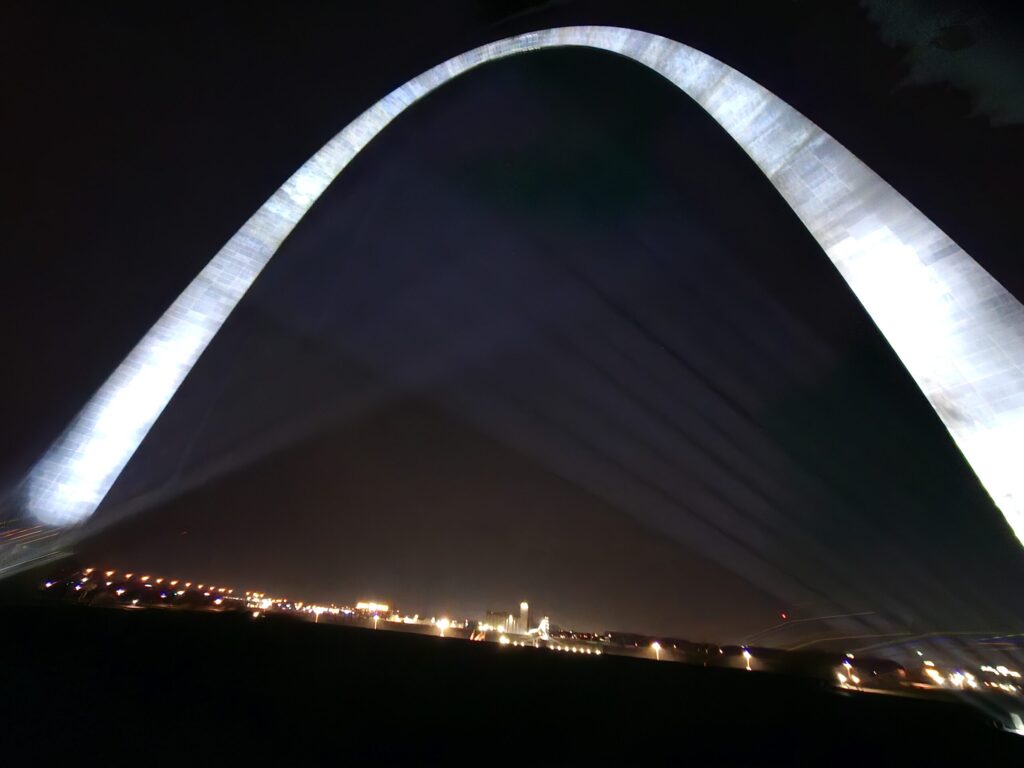A Midwest monument undergoes an LED conversion
In the final weeks of 2023, Reed Burkett Lighting Design (RBLD) helped unveil the newest iteration of the lighting at the St. Louis Gateway Arch. Standing at 630-ft high, the easily recognizable monument can be seen from multiple angles across Missouri and Illinois—and now, it is illuminated with LEDs. The transition to a more sustainable lighting system provides a 60% overall energy reduction, despite the incorporation of more lighting fixtures.
In 2001, the firm, then Randy Burkett Lighting Design, created a lighting scheme that allowed Missourians, Illinoisans and tourists alike to marvel at the curved structure; since then, RBLD has returned on multiple occasions to assist in updates to lighting equipment commissioned by the National Park Service and funded by the Gateway Foundation. This time around, RBLD worked with Technical Productions, Inc., which provided technical, installation and lighting controls support, to bring the Arch up to speed on current sustainability practices.
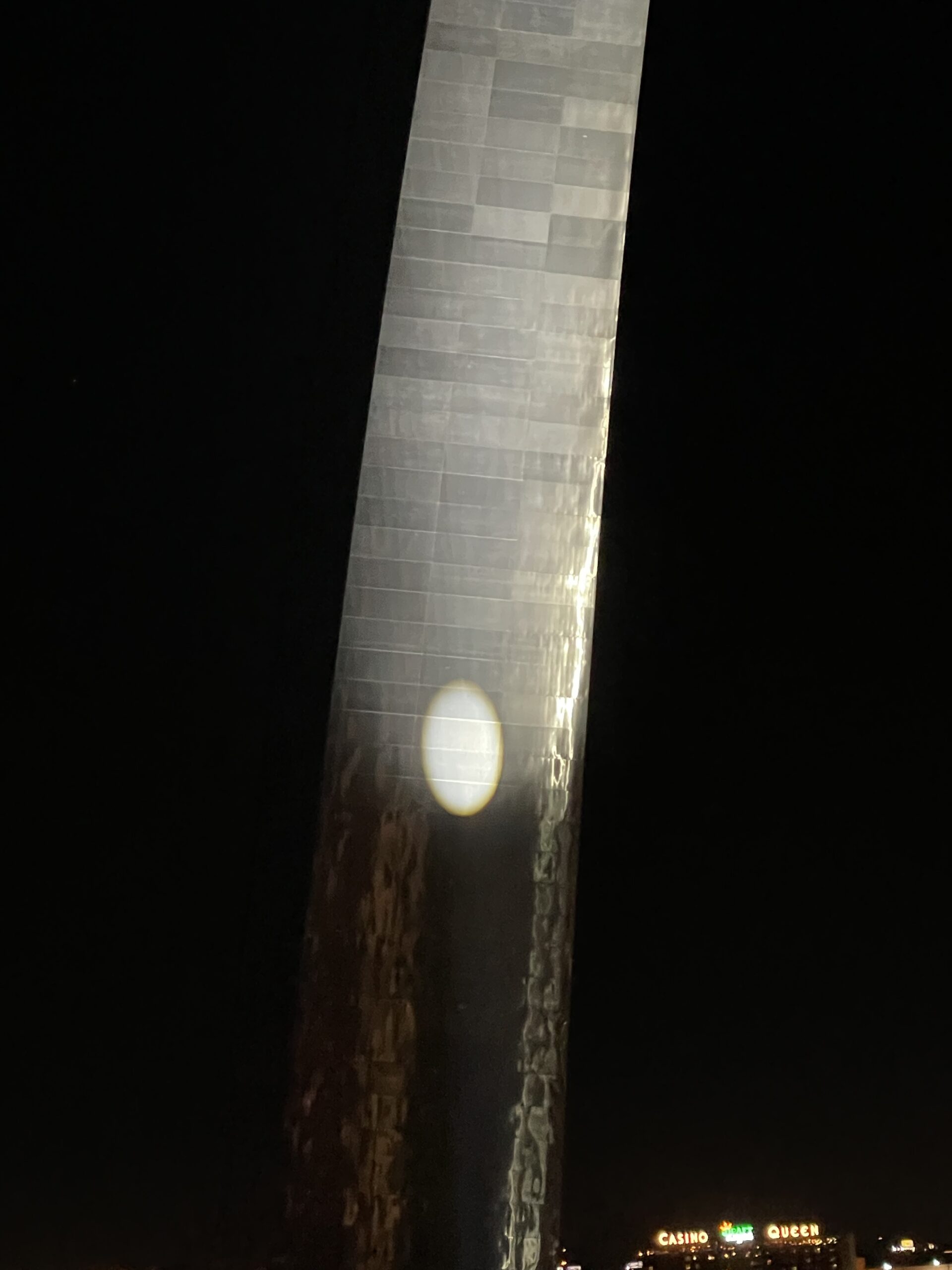
“The original challenge of illuminating a giant reflective surface still exists, and we have waited many years for an LED system to be powerful enough for the job,” said Principal of RBLD Lisa J. Reed. “The shape of the Arch requires fixtures to have a variety of optics, from very narrow to wider, elongated beams. The new LED instruments incorporate automated capabilities that allow us to shape the beam to the match the geometry of the Arch.”
The original 26 luminaires used in the project each weighed 400 pounds and required the use of cranes for installation. The 7,000-W Xenon sources only provided 1,000-hour lifespans and resulted in the need for frequent relamping. Each lamp changeout cost $1,400, an expensive maintenence requirement. Now, the new LED Proteus luminaires from Elation Lighting alternatively consume 1,200 watts each, weigh a much lighter 140 pounds and are rated for 30,000 hours of life—making for a simplified and infrequent relamping process. As the new luminaires are motorized, they provide further longevity: during the day, fixtures remain in a position that protects the lenses and reflectors from degradation due to sunlight and weather. In the evening, each luminaire’s motorized head moves to a predetermined aiming coordinate—and from there the nightly, 30-second light show (“turn-On sequence”) begins. Based on an astronomic timeclock, the Arch is washed in 6500K white light from the base of the legs to the rounded top, beginning 30 minutes after sunset. As a result, the modernized iteration of the illuminated Arch lights up congruently with the changing nature of the seasons, as the time of sunset continually shifts.
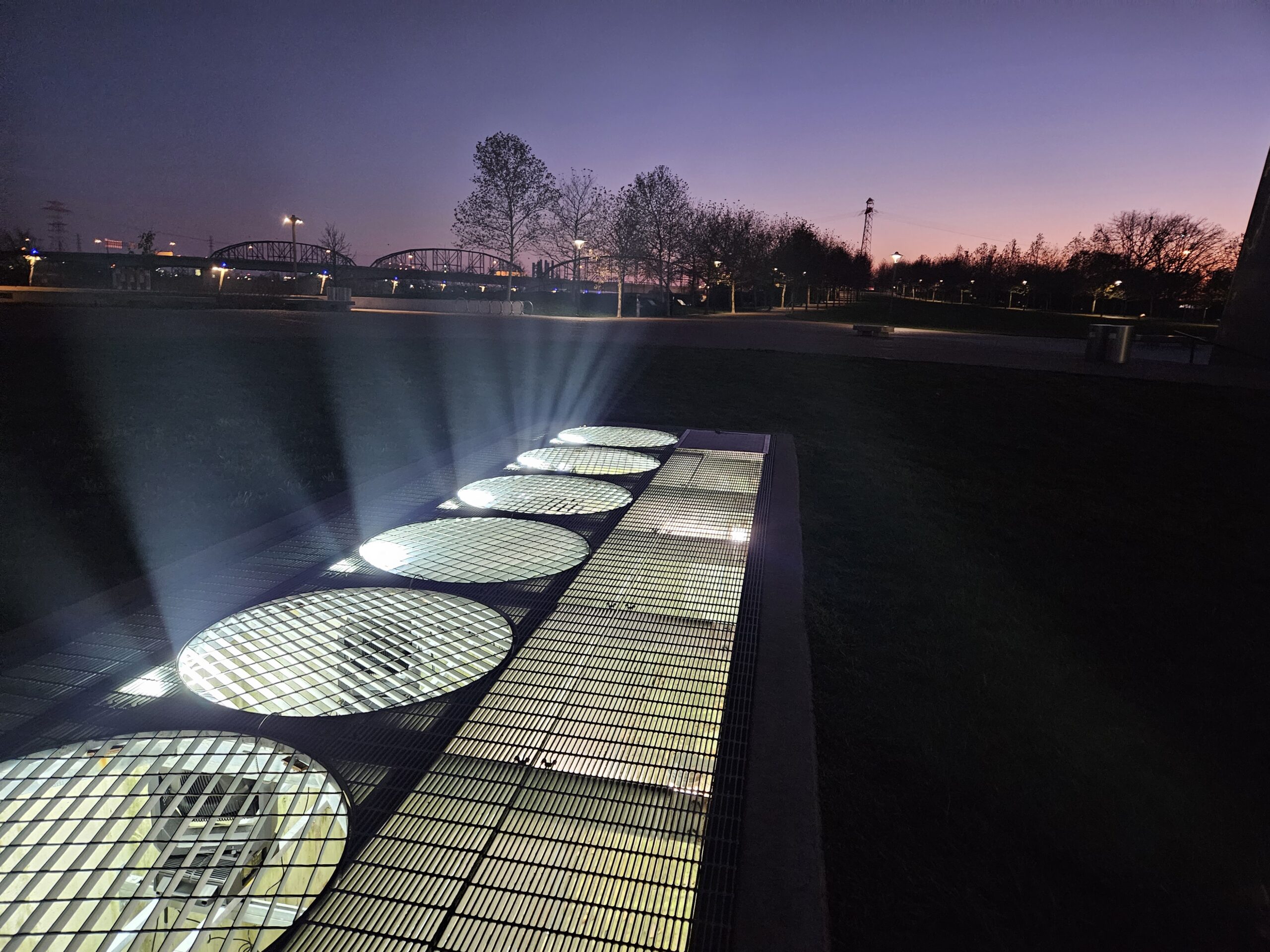
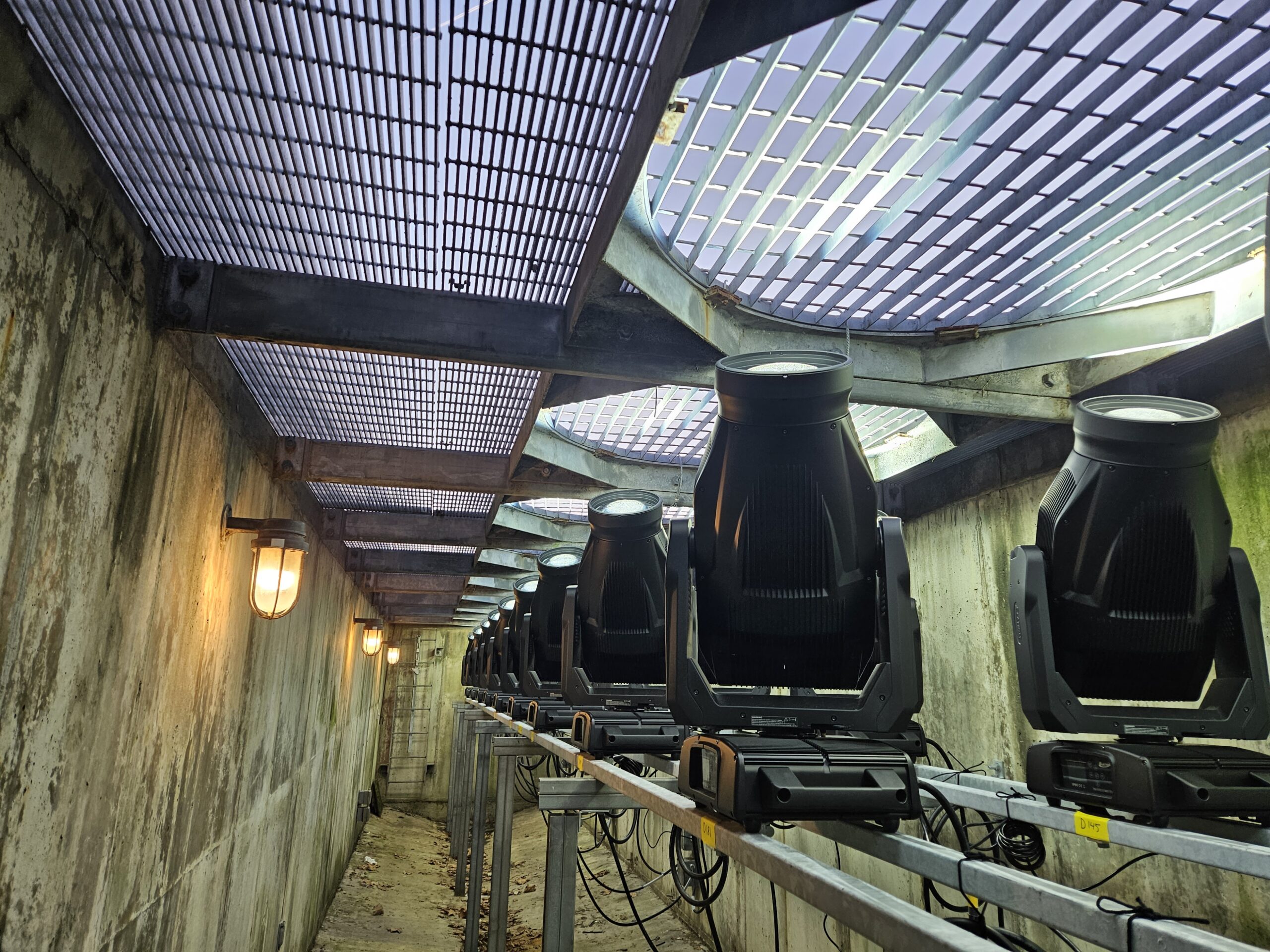
While the lights work in tandem to create a striking, unified effect, not all sides of the Arch are illuminated in the same way. “During focusing and aiming of the luminaires, our team walked and drove all over downtown St. Louis and across the Mississippi River bridges into Illinois to consider the many viewing angles and to ensure the light appears to be even and well blended,” said Reed. “It’s amazing how different [the structure] looks from different angles.”
The west side of the Arch faces the city of St. Louis, with a primary viewing angle aligned with the center of the monument. The opposite side of the Arch looks out on the Mississippi River (where the river is at a point of 2,000-ft wide), and thus, a lower ambient light level. From this east-side view, the Arch is typically seen from a greater distance and obliquely from river bridges. To manage the drastic differences in viewing angles, the team used 24 cross-aimed fixtures for glare-free, west-side illumination, but only 14 fixtures on the opposite, east-facing side of the Arch. There, designers employed a grazing solution with shorter throw distances near the base of each of the monument’s legs.
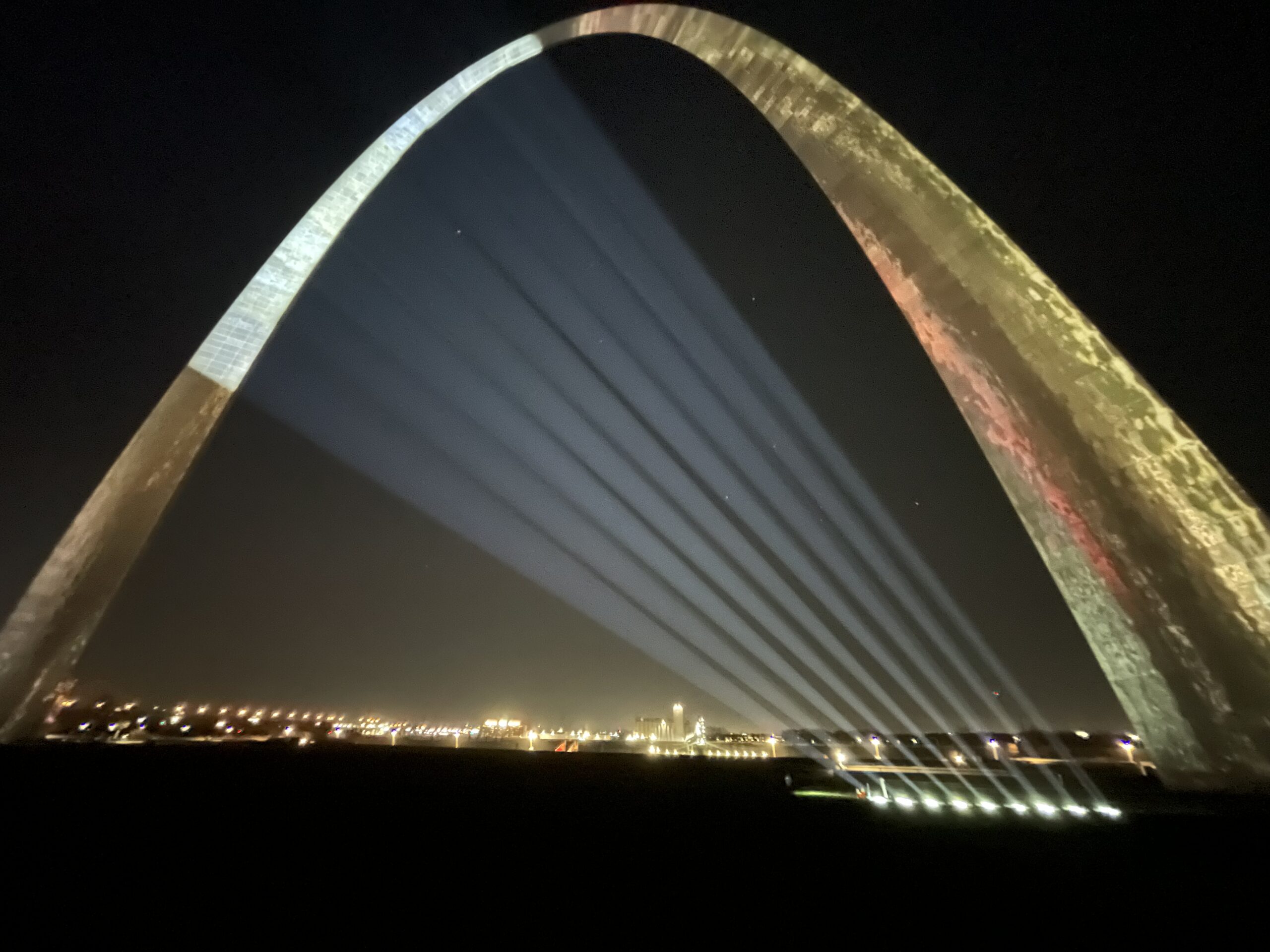
The location of the lighting fixtures was an element of the conversion project that remained true to the original design by RBLD. In 2001, all lighting instruments were located in four large, underground pits with rails located at each of the Arch’s legs. Now, the same pits, in combination with a modified double-rail system developed by Technical Productions, Inc., house the increased number of new lighting solutions. Reed added, “Each of these pits is a large room below the ground, with plenty of space to stand up and walk around. A custom-designed narrow-profile grating material covers the openings in the ground from which the light emits. The grates are round so they can be rotated to minimize their impact on the projecting beams of light. Below grade, mounting rails support the luminaires and provide a manageable service height. The rails also lift the lighting instruments off the ground to protect them from the occasional standing water. The rails facilitate rough aiming and east/west adjustment of the positions of the luminaires so the primary beams of light can be optimized to the center of the pit grates. Finally, the new double-rail system allows fixtures to travel north and south for greater ease during focus.”
So, whether you’re a citizen of the Gateway to the West, a fan of Judy Garland who was headed to the World’s Fair in the 1944 musical film Meet Me in St. Louis, or a member of the lighting industry interested in seeing the new illumination—the Arch is waiting and its new lights, unveiled. What are you waiting for? Meet LD+A there.
THE DESIGNERS |
- Lisa J. Reed is a principal of RBLD.
- Randy Burkett is a principal of RBLD.
- Susan Jennings is a senior designer at RBLD.
- Michael O’Keefe is COO of Technical Productions, Inc. and served as the project lead.
- Nick Vincenty is director of system design and engineering at Technical Productions, Inc.
All photos: Technical Productions, Inc.


